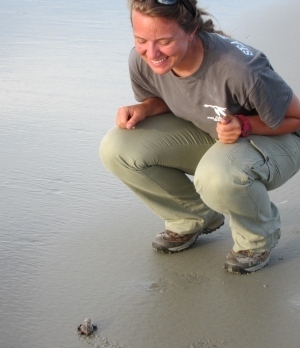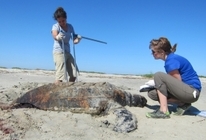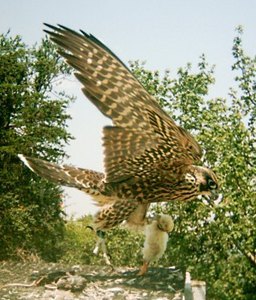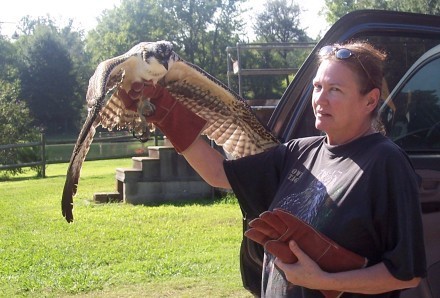Loggerhead nests in Georgia top 2,000
 New season record adds to promising long-term trend
Summer 2012 has been a blockbuster for loggerheads in Georgia.
After recording the second-earliest nesting start on record, these large sea turtles listed as threatened under the Endangered Species Act recently passed the 2,000 nests mark, the most since comprehensive surveys began in 1989. The count as of July 30 was 2,045. The federal recovery target for Georgia’s primary sea turtle is 2,800 nests a year, said DNR Sea Turtle Program Coordinator Mark Dodd. But 2K is a benchmark, particularly when coupled with last year’s 1,992 nests – the previous record – and a longer-term trend of nesting increases that suggests the species is recovering. “It’s significant in that for the last 25 years loggerheads have averaged around 1,000 nests a year (in Georgia),” said Dodd, a senior wildlife biologist with DNR’s Nongame Conservation Section. “To be at 2,000 two years in a row is pretty exciting.”

Loggerheads began nesting in late April and will continue into mid-August. Females are laying eggs at the base of barrier island sand dunes even as hatchlings dig out of older nests and scramble for the surf (update below).
Dodd said the rise in nests is likely due to many factors, including fewer turtle deaths as a commercial fisheries bycatch on the high seas; the required use of turtle excluder devices for shrimp trawling; limits on beach lighting that can disorient hatchling turtles; and, the Sea Turtle Cooperative’s 24/7 work to increase hatch success by protecting nests and controlling predators. Before comprehensive protection began, “some beaches lost 90 percent of nests to hogs and raccoons,” Dodd said. ( Read more about threats to sea turtles.)
The scope of conserving the turtles ranges deep and wide, and involves many partners. In this, Dodd sees a lesson:
If species like loggerheads – long-lived, delayed sexual maturity, less ability to rebound quickly – reach a point of critical imperilment, recovery takes a lot of effort, time and money.
Yet, with long-term commitment, recovery is possible.
For the sea turtles named for their big heads, the combination is apparently working. Dodd will have a better idea how well once he has all nesting data for the season.
Hatching heats up
The summer’s first loggerhead hatchlings were reported July 8 on both Sea and Cumberland islands. Dodd said previous cool, rainy weather delayed hatching. The first hatchlings emerged in 74 to 75 days, and most were males (sand temperatures determine the sex of hatchlings). With the recent return of hotter, drier weather, nest incubation periods are nearing the expected average of 60 days.
Hatching season runs from July through mid-September in Georgia. Loggerheads nest from Virginia to Texas.
Also ...
|
 |
|
-
Sea turtle strandings are still running at a six-year high. Through July 28, the Sea Turtle Stranding and Salvage Network reported 142 turtles found dead, sick or injured on Georgia beaches. Last year's total, the most since at least 2007, was 134. The majority of deaths are related to commercial fishing and boat collision injuries.
-
Watch “Loggerheads: the epic journey,” the EMMY-winning Georgia Outdoors episode featuring DNR staff and others.
|
Rescued Atlanta
falcon sees Rock City
Peregrine flying high after release near Chattanooga
Fourscore has flown the coop, or at least the immediate
vicinity of a Rock City hack box.
The peregrine falcon rescued after leaving its Dunwoody nest
early and released last month at Rock City Gardens atop Lookout Mountain has
not returned for food placed on the box in more than a week, said John Stokes
of Save Our American Raptors-South.
“If he’s still in the area, he’s obviously feeding himself.”

That’s good news for the young male peregrine. It appeared underweight when found on the ground this spring below its nest – 20 stories high on the balcony of a vacant Dunwoody condo.
The nest made by a male falcon hatched in 2008 in Atlanta and a female from a wild New Hampshire nest in 2010 marked the third known peregrine nesting territory in metro Atlanta this year. Considering the mother’s roots, it may also represent the longest recorded dispersal of a nesting peregrine.
But neither benchmark guaranteed success.
The mother seemed non-attentive to the nest, according to Nongame Conservation Section Program Manager Jim Ozier. Both young left early, possibly because only the father was providing food. Greg Greer, who was monitoring the nest, found one of the birds dead in a parking lot. The second was returned to the nest, but it was soon on the ground again. It was rehabilitated and taken to Stokes, who leads raptor programs at Rock City and other venues with his wife, Dale.
The survivor picked up a name – Fourscore refers to Rock City’s 80th anniversary (“score” means 20) – and a following. Stokes blogged about Fourscore taking wing at Rock City, the iconic tourist attraction near Chattanooga, Tenn. The falcon survived 70-plus-mph winds and bullying by vultures. Stokes said that about a week after being released, Fourscore had just nabbed a dead chick left on the hack box when a turkey vulture got on the falcon’s tail. The peregrine – the world’s fastest bird species – suddenly “realized” it could dive, Stokes said. “He did a 360 and came up on the tail of the vulture.”
After that confidence builder, Fourscore became the bane of vultures. “He quickly started routing the local vulture population,” Stokes said.
Fourscore may soon begin a winter migration that could lead it as far as South America. Stokes and others just hope it remembers where it came from when it’s ready to establish a nesting territory.
Peregrine updates
-
Fourscore is the eighth peregrine Stokes has hacked at Rock City Gardens.
-
Three peregrines fledged this year at the SunTrust Plaza nest in Atlanta. One, a female, died of unknown causes at Hartsfield-Jackson Atlanta International Airport. The two males are doing OK, as far as is known.
-
A nearby nest in downtown Atlanta produced two young this year. Their status is unknown.
|
Noteworthy
Third- through fifth-grade teachers, take note: The Nongame Conservation Section is offering a $1,000 "teaching conservation" grant to a Georgia educator who demonstrates exceptional energy and innovation in teaching life sciences. Deadline to apply for the grant, provided by TERN, The Environmental Resources Network, is Sept. 4.
A proposed 50 percent cut in the State and Tribal Wildlife Grants Program has wildlife agencies and conservation groups on the defense. The federal program focused on helping states conserve animals and plants and keep them off the endangered species list has been cut by more than 30 percent since 2010, according to the Teaming With Wildlife coalition, which issued a call for support.
Dwarf witch-alder was found by senior wildlife biologist Nathan Klaus on Black Creek Natural Area, the first time the species listed as threatened in Georgia has been found on DNR-managed lands. The fire-dependent shrub bloomed prolifically after a prescribed fire in May at the middle Georgia natural area.
Join the war on invasive species along the coast. The Coastal Georgia Cooperative Invasive Species Management Area will hold two sessions next month – 9 a.m. Aug. 18 at DNR offices in Brunswick and 10 a.m. Aug. 27 at UGA’s Bamboo Farm and Coastal Gardens in Savannah – to train volunteers in spotting and reporting invasives via EDDMapS. Contact Nongame botanist Eamonn Leonard for details, eamonn.leonard@gadnr.org . (Also see “Coastal network targets invaders,” April 19.)
The recent strandings of a pygmy sperm whale, or Kogia breviceps, on Wassaw Island and another in the Front River near Townsend revealed a species few Georgians have ever seen. Yet these small, open-ocean whales and the similar dwarf sperm whale made up 16 percent of the 281 strandings reported by the Georgia Marine Mammal Stranding Network from 2000 through 2010.
Killing a Florida panther left a Naples, Fla., man with penalties including home confinement, probation, $10,000 in fines, a hunting ban, 200 hours of community service and a public apology in the local newspaper. Todd Alan Benfield pleaded guilty to killing the endangered panther while bow hunting in 2009.
The ginseng harvest in Georgia hit a seven-year low in 2011. In a report to the U.S. Fish and Wildlife Service, Nongame botanist Lisa Kruse said sales of 158 pounds of the plant prized as a medicinal were reported.
Upcoming:
-
Aug. 18 and 27: Coastal Georgia Cooperative Invasive Species Management Area citizen scientist training for detecting, reporting invasive species: 9 a.m. Aug. 18, Susan Shipman Environmental Learning Center, DNR Coastal Resources Division, Brunswick. Also: 10 a.m. Aug. 27, UGA Bamboo Farm and Coastal Gardens, Savannah. Contact: Eamonn Leonard, eamonn.leonard@gadnr.org.
-
Oct. 4-6: Gopher Tortoise Council annual meeting, Kirbo Center at Bainbridge College in Bainbridge.
-
Nov. 8: Georgia Exotic Pest Plant Council annual meeting and conference, Stuckey Conference Center, UGA Griffin Campus.
Headlines
Parting shot

This young osprey was returned to the wild at Buford Trout
Hatchery on July 27.
her wing earlier in the
month after it was found "exhausted" on the ground at a pond
near Canton. With food
and care including daily meals of trout that had died at
Buford Hatchery and were provided by staff, the osprey
regained strength. McCord
McCord said it's best to
return rehabilitated fledglings to their parents’ territory as soon
as possible – so
parental training and support can continue – it wasn’t clear where
this bird’s territory or
parents were. The release, shown in this
video by DNR natural
resources technician
Andy Wentworth, put the osprey in prime habitat. The hatchery
sits beside the
Chattahoochee River just downstream of Lake Lanier.
Credits
** Masthead: Fledgling osprey in rehabilitation. Monteen McCord/www.hawktalk.org
** On Blackbeard Island, Sea Turtle Cooperative member Molly Martin of the U.S. Fish and Wildlife Service sees her first hatchling. Mark Dodd/Ga. DNR
** Sea turtle workers Meghan Gahm, left, and Raleigh Nyenhuis inventory a nest on Sea Island. Mark Dodd/Ga. DNR
** DNR sea turtle technicians Ashley Raybould, left, and Sarah Rose document a leatherback killed after being hit by a boat this summer. Mark Dodd/Ga. DNR
** Fourscore nabs a dead chick left on the hack box at Rock City Gardens. Special from John Stokes
** Osprey release. Andy Wentworth/Ga. DNR

Give wildlife a chance!
The Nongame
Conservation Section of Georgia DNR receives no state funds to
conserve nongame wildlife, native plants and natural habitats. Instead, we
depend on contributions, grants and fundraisers, such as the eagle and
hummingbird license plates.
How can you help?
Learn more about the Nongame Conservation Section in our annual report.
|